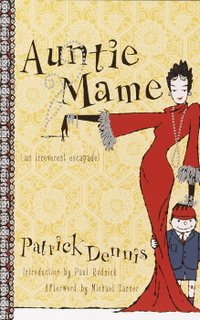One night in my twenties, I found myself wandering a strip of real estate that runs along York Avenue between 51st and 57th Streets. The area is called “Sutton Place.” It doesn’t get more “East Side” – stylistically and geographically – than this short stretch of tree-lined, water-front property at the edge of the island of Manhattan.
I was working as a part-time nanny, assigned to mind two boys who were staying with their grandparents. I saw a lot of chintz that night, and etchings of sailboats and maritime maps. I saw needlepoint cushions bearing the faces of family bulldogs, and rows upon rows of Lenox China.
When I’d entered the lobby, I saw an old woman asking the doorman whether her laundry had been delivered.
I realized with a jolt that it was Mrs. Luce. Clotilde Luce was the receptionist at my old acting school, The Neighborhood Playhouse. The Playhouse, as it was once affectionately known, had a heyday, like every other New York City icon. That era has passed, and great acting teachers like Sanford Meisner no longer illuminate its dusty classrooms. But it was once a lighthouse for many struggling performers, living in the city and working toward a dream.
That Clotilde Luce lived in a Sutton Place palace summed up Sutton Place. It is Old-New York: stuffy, iconic, and glamorous. Sutton Place is surreally detached from the rest of Manhattan. You can’t even call it a neighborhood, it’s too small. Most people don’t know it exists: you’d have no reason to unless you lived there or were sent there for work. Yet it stands for so much that is intangible about the city. It also seems as if it might crumble to dust if the East River wind were to kick up. Eras crumble, but writers like Patrick Dennis remember them, study them, and record them. His Auntie Mame is a love letter to the very concept of by-gone eras.
Mame lives in Sutton Place. Her orphaned nephew Patrick and his God-fearing Irish nanny arrive on a searing July day. Once Mame realizes they are not additional cooking staff and that Patrick is the boy she has “inherited” from her dead brother, she instantly clutches him to her chest. They’ve arrived on the wrong day, and an orgy-like party is in full swing in her red-walled, Asian/Modern/Freud inspired duplex. Norah nearly faints, Patrick wets his pants; but, he writes, once Mame hugs him, “I knew I was safe.”
Even if one hasn’t read the book or seen the unfaithful film it inspired, the character of Auntie Mame looms large in our collective consciousness. Like the Statue of Liberty, Mame is a beacon to admirers of New York. She calls to aficionados of glamour, eccentricity and history.
We follow Mame and Patrick on adventures that make spectacles equally of stuffy suburban conservatives and dangerous radicals, like atheists. When Mame suggests Ethical Culture as a possible school for Patrick, his trust-fund manager nearly passes out in his Scarsdale study. Surely she wouldn’t want Patrick surrounded by “a pack of Jews?”
After obediently signing her nephew up for the conservative Buckley School, she sends him in secret to a ”progressive” school that encourages full nudity and children spending their day climbing in and out of a plastic womb.
Mame is surely a political spokeswoman for her creator, but she is also a send-up. Everyone in the book is a send-up. Even the earnest Patrick is a cartoon version of a boy. He is only a sketch, and his creator fills in smudge marks and extra strokes to define him further only when the plot demands it.
Mame has no arc, despite her rise and fall and rise again in fortunes, her ever-changing marital status, her debuts and rapid finales as an actor, and her stints as a real-estate secretary, an interior designer and a saleswoman in Macy’s roller skate department.
The book, in turn, is not as much a novel as a notebook in which a witty and wistful student has written copious notes. Dennis has embellished here and tightened there, all in the name of fun and style and pace.
“I’ve always thought that for all her popularity, her interests, her constant comings and goings, she was probably a little lonely, too.”
In one sentence, Dennis provides cover for his gem.
Don’t expect her to be a real person, he warns. She is a projection screen for dreams and disappointments. She is also an encyclopedia. She is neither a comic nor a tragic figure. If you are looking for a novel, you have come to the wrong place.
You arrive at Mame’s duplex and dance the night away. You’re invited for a brief stay only, as the stock market crashes and Mame must move. Her financial ruin by chapter three is a warning: enjoy yourself, because, to borrow from a song Auntie Mame wouldn’t live to hear, the times, they are ‘a changing.
When Mame loses her diamond bracelet in a debacle on stage, she falls into a feverish delirium and must be hospitalized. It is the Depression, and there is no money for replacing treasure.
Patrick sells his microscope to buy her the largest rhinestone bracelet twelve dollars can buy. He figures that against the backdrop of Mame’s real mink coat, the trinket might look like the genuine article.
“Merry Christmas, Auntie Mame,” I said. Then I added, “It isn’t real.”
“Darling, darling Patrick,” she cried, “it’s the most beautiful bracelet I’ve ever seen in my life!”
Dennis might be writing about Mame herself. She’s an illusion, a sleight of literary hand, but draped in fine words, she looks like the genuine article. Go ahead and love her. She is, after all, a perfumed dream of the guardian you’ve always wanted.





